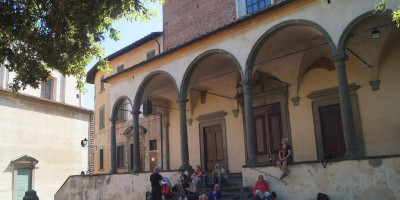Fucecchio
. L’età comunale fu un periodo di intensa crescita in cui Fucecchio ebbe importanza strategica in quanto territorio di frontiera nelle dispute fra Lucca e Firenze, vide le gesta e talvolta ne decise le sorti di Castruccio Castracani. Il 14 dicembre 1330, a seguito di propria istanza, il comune di Fucecchio entrò sotto la potestà della Repubblica Fiorentina e da quella data ne seguì le sorti e i voleri, accettando tra le altre cose anche il Podestà che sarebbe stato designato dalla Signoria. Intorno alla metà del 1300 la crescita demografica fu frenata da una grave pestilenza e la popolazione fu decimata. La ripresa fu lenta e coincise con il ripopolamento delle campagne a partire dal 1500, diventando ancora più rapida dalla seconda metà del 1700. Così, nel 1800, Fucecchio era di nuovo un paese popoloso con le attività principali legate alla manifattura, all’artigianato e al piccolo commercio; ma sarà nel secondo dopoguerra che incontrerà la sua vera “rivoluzione industriale” grazie allo sviluppo dei settori conciario e calzaturiero. Nel XIX secolo la comunità seguì e partecipò alle vicende storiche risorgimentali esprimendosi con una delle figure più importanti dell’epoca, Giuseppe Montanelli. Il 23 agosto 1944 le frazioni di Querce e Massarella furono tra le località colpite dall’eccidio del Padule di Fucecchio nel quale la 26ª divisione corazzata dell’esercito tedesco nazista uccise un totale di 175 civili (di cui uno solo partigiano). Fucecchio fu liberata il 1º settembre 1944 dalla VI Divisione corazzata sudafricana e dalla I Divisione corazzata americana.




